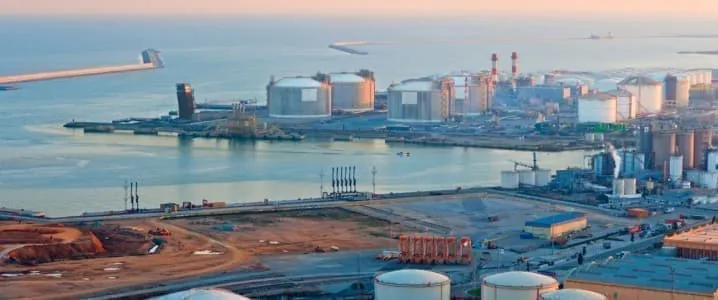
Canada's and Mexico’s LNG Boom: How the U.S. Permit Freeze is Reshaping Global Energy Markets
2024-09-23
Canada's and Mexico’s LNG Boom: How the U.S. Permit Freeze is Reshaping Global Energy Markets
A recent freeze on new liquefied natural gas (LNG) export permits in the United States has opened the door for Canada and Mexico to significantly ramp up their LNG export capabilities. The Biden Administration's decision to pause approvals is aimed at evaluating whether existing LNG exports are undermining domestic energy security, inflating consumer costs, and causing environmental harm. This moratorium has left a substantial gap in the market, prompting both neighboring countries to act swiftly and invest heavily to capitalize on this unique opportunity.
As a direct response to the U.S. permit freeze, Canada and Mexico have collectively earmarked an astounding $63 billion for enhancements to their LNG export infrastructures, as reported by Rystad Energy AS. Kenny Stein, vice president of policy at the Institute for Energy Research, emphasized that buyers are actively seeking alternative suppliers and welcome the prospect of additional non-U.S. LNG in the market. This shift is particularly relevant as Asian markets look for reliable LNG sources to transition away from coal.
From a climate standpoint, the increase in LNG exports from Canada and Mexico holds promise, especially in the context of helping Asia diversify its energy sources. However, analysts note that despite these exports, they may not fully meet the region's growing demand, especially in relation to coal displacement targets outlined for the 2030s and beyond. Japan and South Korea, among others, are facing mounting challenges in reducing coal dependency, and LNG is seen as a cleaner, albeit not absolute, alternative.
What sets Canada and Mexico apart from U.S. suppliers is their strategic planning for expanding LNG export facilities on the Pacific coast. This infrastructure development aims to streamline supply routes by avoiding the Panama Canal, which has increasingly presented logistical challenges as a global choke point for LNG shipments. By exporting directly to Asian markets, these countries could secure a competitive advantage that might reshape the dynamics of global LNG trade.
Moreover, the LNG boom isn't limited to North America. South America is also getting in on the action, with a floating natural gas project off the coast of Argentina poised to become a new supplier for eastern markets. Companies like BP's Pan American Energy, YPF, Petronas, and Tecpetrol are spearheading various initiatives aimed at unlocking the natural gas potential within Argentina, which possesses the world's second-largest shale gas reserves. Argentina's strategy positions it among the ranks of key shale gas producers, including the U.S., Canada, and China.
In light of these developments, once the U.S. lifts its freeze on LNG permits, exporters from across the Americas are likely to intensify competition in the marketplace. This competitive landscape could lead to lower prices and diversified energy sources for consumers, significantly altering the global energy framework.
As the race to secure LNG exports heats up, all eyes will be on how the U.S. plans to respond and whether it can regain its status as the world’s leading LNG exporter amid burgeoning competition from its North and South American neighbors. Will the U.S. find a way to navigate these changes, or will Canada and Mexico solidify their foothold in the global energy market? The answer could have long-lasting implications for consumers and the climate alike.









 Brasil (PT)
Brasil (PT)
 Canada (EN)
Canada (EN)
 Chile (ES)
Chile (ES)
 España (ES)
España (ES)
 France (FR)
France (FR)
 Hong Kong (EN)
Hong Kong (EN)
 Italia (IT)
Italia (IT)
 日本 (JA)
日本 (JA)
 Magyarország (HU)
Magyarország (HU)
 Norge (NO)
Norge (NO)
 Polska (PL)
Polska (PL)
 Schweiz (DE)
Schweiz (DE)
 Singapore (EN)
Singapore (EN)
 Sverige (SV)
Sverige (SV)
 Suomi (FI)
Suomi (FI)
 Türkiye (TR)
Türkiye (TR)